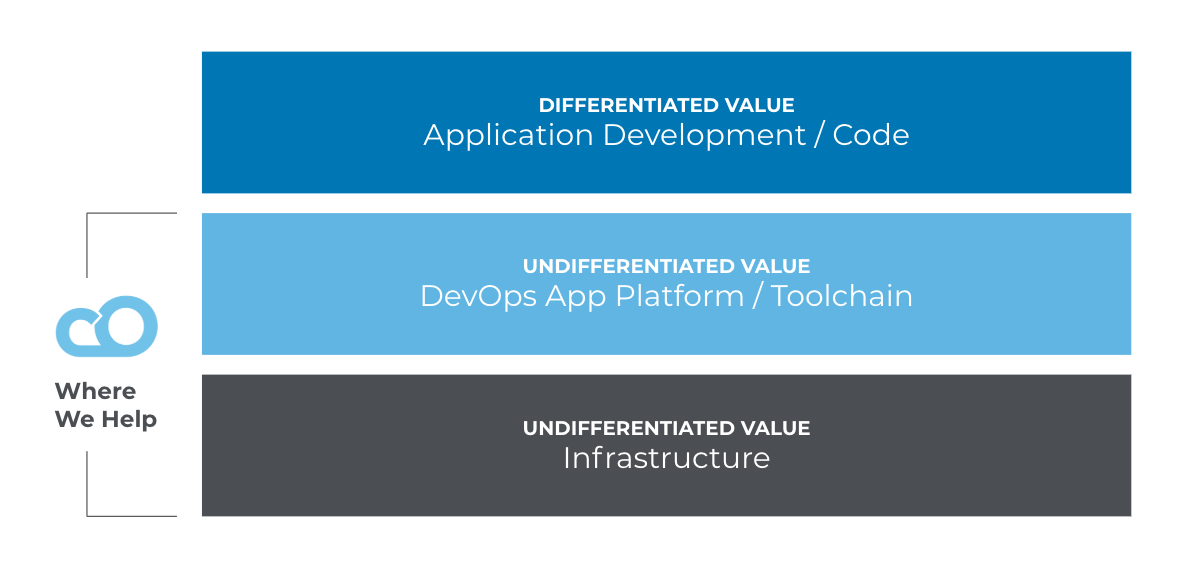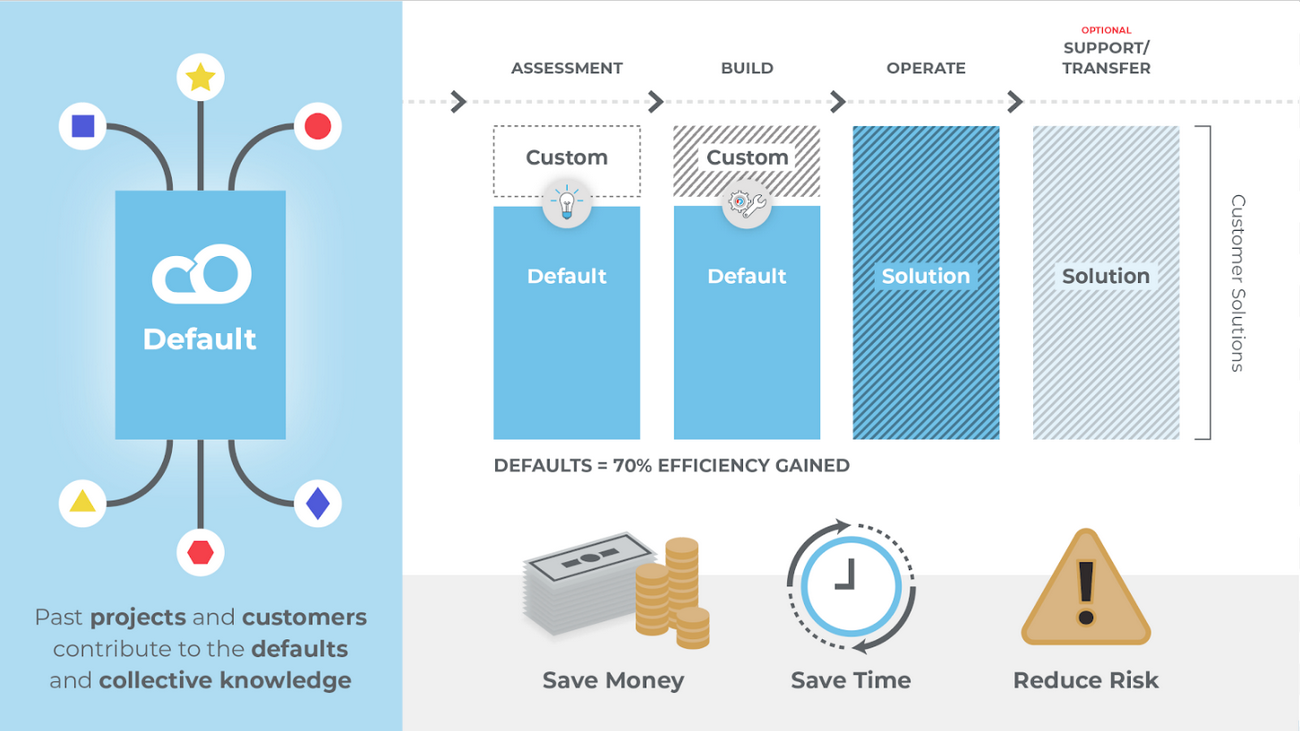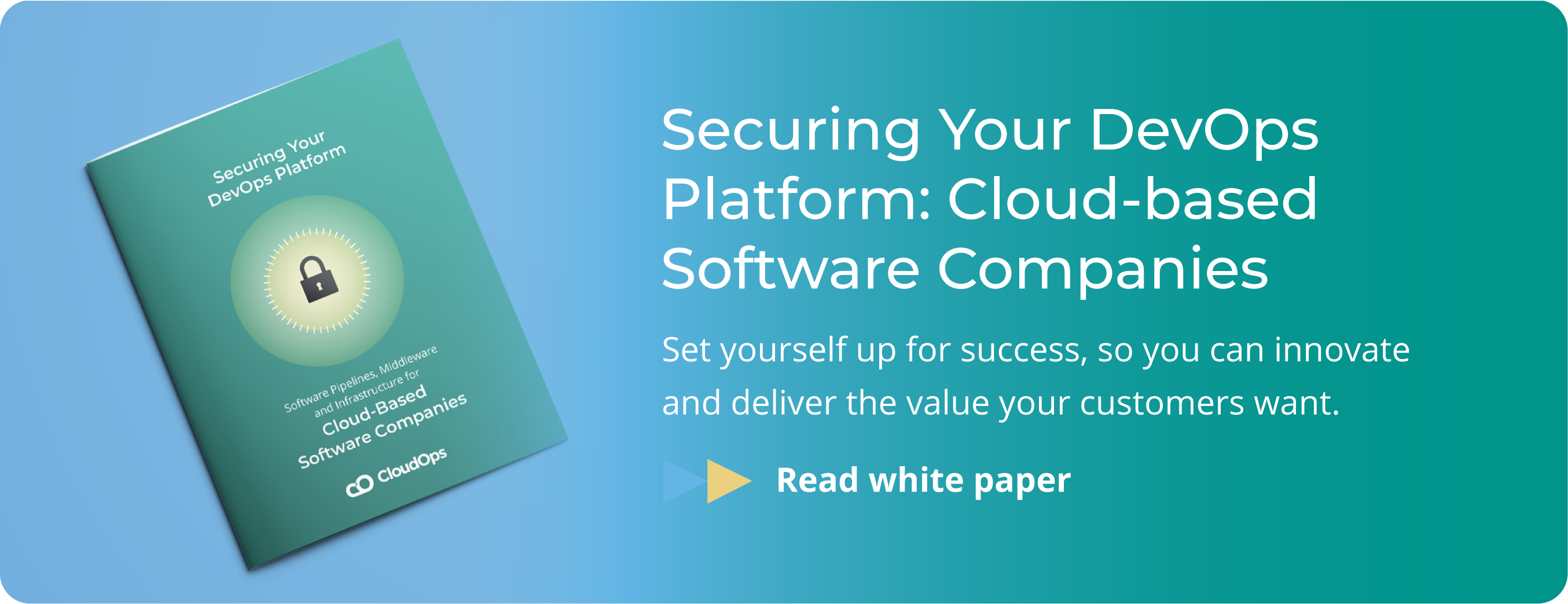The CloudOps Delivery Model – Accelerated Value Delivery through Code and Collaboration

DevOps aligns cultural change with the speed and flexibility of cloud, containers, and modernized architectures. Successfully implemented, its combination of practices and tools will increase the delivery of applications and services at high velocity. DevOps allows organizations to pivot when needed and respond to market changes as part of finding digital solutions to their industry’s problems.
While a necessary part of digital transformation, organizations may find the process of adopting DevOps to be long, difficult, and unclear. A Harvard Business Review survey found that although 86% of respondents identified the ability to build and deploy software quickly as being important for their organizations, only 10% had seen success. DevOps is uncharted territory, a wild landscape full of unknown variables. Many struggle to find clearly defined blueprints for transformation.
DevOps is essentially an organization-wide initiative that flattens traditional silos within software delivery and enforces automated pipelines of continuous integration and delivery (CI/CD). This is done separately in three layers: the application, the application platform, and the infrastructure.
Application development – Application development refers to the actual software development and code that will digitize an organization’s business model. This digitization is enabled by cloud infrastructure and driven by efficiency in the application platform. In modernized architectures, workloads in the application are packaged into lightweight containers in the application platform that can move seamlessly amongst multi-cloud environments. An organization’s application development depends on the robustness and efficiency of software delivery pipelines in the application platform, which in turn depends on the infrastructure.
Application platform – The application platform is where the individual APIs converted by cloud providers are collected and transformed into a platform service that application developers can write code on. Application platforms oversee the communication between end-user requests and hardware consumption, making its efficiency essential for organizations to quickly respond to fluctuations in demand. Cloud native application platforms make it easier to build applications that auto-deploy, auto-scale, and are auto-resilient.
Infrastructure – Lying at the bottom of a technology stack, the infrastructure is where physical hardware is converted into APIs that can be consumed. Public cloud providers, like AWS, GCP, and Azure, can offer rich features and maximize economies of scale. Regional cloud providers, like cloud.ca, can fulfill specific regulatory requirements. Private clouds, with the help of OpenStack or CloudStack, allow greater flexibility. Organizations can also leverage hybrid or multi-cloud environments.

Building, Operating, and Transferring Undifferentiated Value in the Application Platform
Each layer has its own cycle of software delivery that can use DevOps philosophies to release features more frequently and in smaller batches. However, DevOps requires change throughout an entire technology stack. The accelerated feature velocity that DevOps creates in any single layer compounds when similar changes are made in other layers. DevOps will benefit any layer on its own, but is an organization-wide approach that must be implemented in all layers. if application development is to release software at the velocity that digital transformation demands. Nonetheless, DevOps tools and practices will integrate and appear differently in each layer as they will reflect the value that layer is bringing to the organization.
Application development is where organizations must deliver differentiated value to the market, and where software delivery pipelines must also be differentiated to reflect the value being delivered. This is the layer where organizations should be focusing their attention, finding a unique set of tools and practices. Application development is ultimately the face of an organization’s digital transformation as it is the digital solution being offered.
In contrast, a technology stack’s application platform and infrastructure deliver undifferentiated value. They are the backbone of digital transformation, and their role is to provide application development with the self-service, utility economics, and API-automated continuous delivery of IT that cloud can enable. Organizations must each discover a unique combination of tools and practices that best supports their application’s needs, but the tools and practices available are undifferentiated. These core components are built by replicating proven automation recipes that form pipelines built and operated by the necessary DevOps skills and culture. Delivering undifferentiated value, the CI/CD pipelines within the application platform and infrastructure are built with undifferentiated components.
The DevOps and Application Platform Ecosystems are Overwhelming
Application platform components themselves are undifferentiated, but it can be difficult to know which tools are best for which jobs. The number of cloud native tools has exploded in the past few years, and the wider DevOps tooling and application platform ecosystem can be overwhelming to navigate. It can take enterprise architects months to become familiar with the quickly evolving, diverse options. The expertise required to design and build modern application platforms should take years to develop.
The CloudOps Delivery Model
CloudOps’ delivery model involves assessing your requirements, defining your strategy and then building your application platform or parts of your application platform. We offer undifferentiated value in the form of scalable solutions that work across multiple customers and are applicable across multiple domains. We build application platforms adapted to our customers’ needs – for example, from high velocity for ad-tech start-ups, to highly controlled for customers that need their pipeline and platform adapted to industry regulations. CloudOps gives customers a toolbag of automation recipes that we replicate across different platforms and supplement with consulting, staff augmentation, and training. This combination allows our customers to focus on their application development without worrying about how to design and build their application platform and infrastructure.
Collective Knowledge – Our delivery model benefits from the collective knowledge of a team of experts and the residual value of every project we worked on before. Shared libraries of automation recipes are improved with every project and become default components that provide value to all platforms and increase efficiency by 70%. The application platforms we build are a combination of default and customized components, allowing us to provide our customers with faster time to value and the right expertise at the right time.
Time – Individual technical managers planning and executing DevOps projects for the first time may be less certain about how to avoid and overcome challenges than teams that have expertise in this domain. Our professional services can complete projects in perhaps a third of the time. The collective knowledge our teams have access to will improve the strategy and execution of projects.

Knowledge Transfer – Our delivery model includes workshops and training that empower developers to get the most out of the platform and that allow operations to maintain and use the application platform components we implement well into the future. Our customers remain in control of their undifferentiated value, which they can choose to manage themselves or with our managed services in the long term. We help our customers own their destinies in the cloud either with or without us.
24/7 Help – CloudOps offers 24/7 support, meaning that our customers can call us anytime. Problem-solving doesn’t have to pass through a bottleneck as our teams are more likely to have access to the skills needed at any given time.
Partnership – We partner with our customers for their long-term success and consider the wider impacts of DevOps on an organization. We have more of a vested interest in the longevity of an infrastructure and application platform as we are able to take accountability for the entire strategy, delivery, operational success, and knowledge transfer.
CloudOps’ professional services build, operate, and transfer undifferentiated value in the application platform. We’re accountable for the success of the solution, which we train our partners to use. With almost fifteen years of industry experience, our teams of experts have a wealth of collective knowledge that let us finish projects more quickly and efficiently than those starting DevOps journeys for the first time. We are experts in the undifferentiated value that allow customers to focus on creating differentiated value in application development. We empower our customers to use the application platform delivered and allow application developers to trust the health and design of the platform being used.
CloudOps’ DevOps Platform and Practices Assessment (DPPA) will analyse the existing systems in your technology stack and provide recommendations for building an application platform that takes your business and technical requirements into account. Whether you are getting ready to migrate your application into the cloud and need help crafting and executing a strategy, or you hope to optimize your existing solution in the cloud by adopting DevOps tools and processes, our DPPA will set you on the right track.
Contact us to learn more about how we can provide you with a blueprint for cloud migration, or download our white paper to start thinking about your current technology stack.

